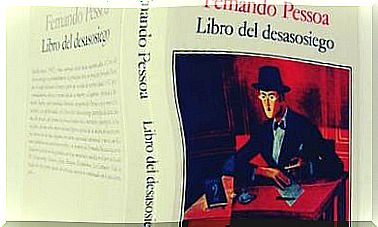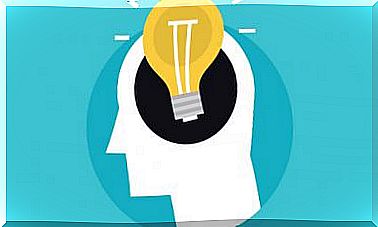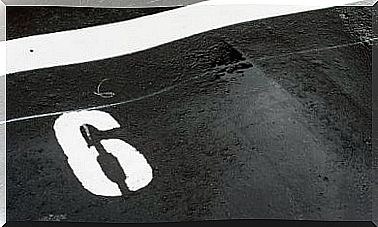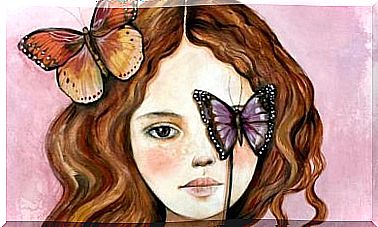Out Of Body Experiences, What Are They?
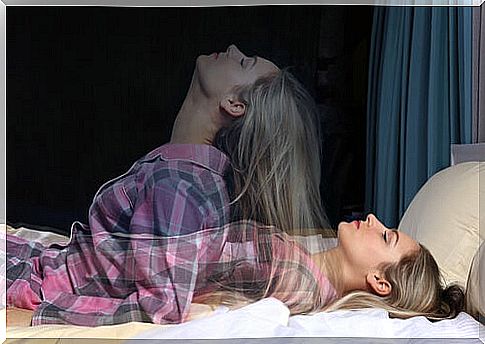
Out-of-body experiences encompass a conglomeration of phenomena as fantastic as they are complex. Imagine seeing your body from the outside or having the sensation of floating, these are some of the sensations that make up the phenomenon. Now, for a long time the explanations were tribal and mystical, today we know that the cause is in our brain.
Out-of-body experiences are perceptual phenomena that include experiences of illusory movement. Among them we can highlight: flying, falling, floating and seeing oneself from the outside. These dissociative experiences are related to neurological and psychological factors, occurring both in healthy subjects and with some pathology.
Types of out-of-body experiences
The phenomenon can be divided into two types of experience, with well-defined characteristics :
- Sensory experiences : the sensations of falling or floating represent a break in the union of bodily sensations that involve the vestibule-motor system.
- Autoscopic experiences: these experiences consist of perceiving one’s own body from the place of a third party.
How do out-of-body experiences occur?
Out-of-body experiences are often associated with altered states of consciousness. Many authors compare the phenomenon with characteristic states of dreams, with a large component of imagination. In addition, it is a process of anomalous multisensory integration in which the subject is aware of the situation. Therefore, the vestibular, motor and sensory systems are essential for their gestation.
Systems participating in the phenomenon
- Vestibular : this system has receptors in the inner ear that are responsible for maintaining a stable image on the retina, a fundamental ability to maintain balance.
- Motor : during the experiences, even though they are not physically taking place, the brain executes the corresponding movement programs on a dissociative plane.
- Sensory : like the motor, it is located in the parietal lobe. Many authors theorize that what is actually projected is the self-perceived image of the body.
Disorders and phenomena linked to out-of-body experiences
When any of the aforementioned systems is altered, the predisposition for an out-of-body experience to occur is greater. Disorders linked to sleep, drug use and brain injuries can create the optimal conditions for these phenomena.
Among the phenomena associated with sleep we can highlight:
- Hypnagogic and hypnopompic hallucinations : These are vivid and confusing perceptual experiences that occur at the beginning and end of sleep.
- Sleep paralysis : Desynchronization between the extremities and the execution motor alters the body’s multisensory processing and, therefore, self-perception, causing floating sensations or out-of-body experiences.
- Lucid dreams : they consist of the recovery of consciousness during sleep. The subject is able to partially direct a dream that is presented with very sharp characteristics and very precise details.
- Rapid Eye Movement Sleep : in this stage of sleep, daydreams occur, since the brain is highly active (similar to wakefulness). Thanks to electrophysiological studies, it has been discovered that the three previous situations occur during this stage of sleep.
Is it possible to induce an out-of-body experience?
For centuries these experiences were linked to the paranormal. This is not strange, since our ancestors did not have the tools to study them. Today we know that this phenomenon is caused by a distortion of one’s own body image, where cognitive processes such as memory, self-perception and imagination enter.
Out of body experiences and fantasy
Just as this experience has an organic basis, there are also psychological factors closely linked to the phenomenon, the most prominent being the personality. Several studies have shown that these experiences are more frequent in subjects with a high degree of fantasy and openness to the experience. This relationship shows that experiences can also be fostered by suggestion and personality characteristics.
Artificial induction
The phenomenon can also be artificially induced, which is one of the greatest evidences of its cerebral cause. The most effective techniques are:
- Induction of brain frequencies : through binaural beats, it is possible to induce in the brain a Theta wave activity (4 – 7.5 Hz), characteristic of the states between sleep and wakefulness.
- Transcranial Magnetic Stimulation : through stimulation of the temporal lobes, as in the Persinger experiment. The hyperconnectivity generated between lobes causes an intrusion of the spatial sense of “I” (right hemisphere) in the linguistic sense of “I” (left hemisphere).
- Direct stimulation : in some experiments it has been possible to promote these experiences through direct stimulation of the vestibular and motor cortex.
- Electrical stimulation of the temporoparietal junction: as in Arzy’s experiment, stimulation of this area of great multisensory processing causes self-perception errors.
- Sensory deprivation : By eliminating references to space and time, disorientation can cause altered states of consciousness where mental images become excessively realistic.
Out of body experiences and meditation
This phenomenon usually occurs in states where brain activity is similar to that of sleep, but where the subject maintains consciousness. It has been found that those who meditate regularly can more easily achieve these experiences, which some call “astral travel.” Consequently, theta waves tend to proliferate in extreme states of relaxation such as meditation.
Mirror neuron involvement
Authors Jalal and Ramachandran propose that the mirror neuron system is so connected that it allows for virtual third-person vision. Mirror neurons fire simply by seeing another person perform an action, connecting with higher centers to anticipate or symbolically imitate it. The connection of these neurons with the cerebral cortex and the afferent pathways would allow them to “separate from the body” under conditions of sensory disturbance.
A psychobiological phenomenon
Out-of-body experiences involve the nervous and motor systems, cognitive functions, and personality traits. Likewise, it is a phenomenon that, despite occurring naturally under certain conditions, can also be pathological.
Therefore, provoking these experiences is not necessarily healthy and can present a danger as they are also associated with psychotic crises.
Since it is a phenomenon associated with the paranormal, for many years people refused to consult a specialist for fear of being labeled crazy. Understanding the true causes of the phenomenon is a great first step in treating it correctly.



